
Volume 2, Issue 1
January 2008
Unsubscribe
It's common (especially on race cars) to lock out the ignition timing. This means that the ignition is advanced as much at cranking speeds as it is at 5000 rpm. When the ignition timing is advanced this much during cranking, the engine tries to turn backwards which often leads to "kickback" which can damage the starter and/or the ring gear.
Locked timing is common on hard core race cars (especially on cars running a crank trigger) so many people lock the timing out simply because it seems like the racy thing to do. While it is true that many people have no starting problems even with the timing locked, locking the timing greatly increases the chance of kickback. If a crank trigger is not used, there is no need to lock the timing. If the engine needs more initial timing to idle well, reduce the amount of distributor advance and increase the initial timing by the same amount. A typical "race only" engine may require 25 degrees initial timing to idle crisply. But 25 degrees of advance is still far better for the starter than 35 or 40 degrees which is common with locked timing. If for some reason mechanical advance is simply not an option, there are now several companies making distributors with adjustable electronic advance curves.
If a crank trigger is used, there is no choice but to run locked timing.
When a crank trigger is used, it is still possible to retard the timing during cranking. Even when a crank trigger is used, a distributor is still present. Use a distributor with a magnetic pickup. Use the pickup in the distributor to trigger the ignition box during cranking. Set the distributor up so that it triggers approximately 20 degrees later than the crank trigger. Once the engine is running, a switch can be used so the ignition box is then triggered by the crank trigger rather than the pickup in the distributor.
An ignition box with "electronic start retard" will cure any kickback problems associated with locked timing.
Electronic start retard functions are now built into many CD boxes. They work great about 90% of the time. Unfortunately, the other 10% of the time they make the engine kick back even harder than if the electronic start retard wasn't in use. It's all because of the way the box calculates when and how much to retard the timing. The box doesn't allow the coil to make a spark until it receives several trigger signals from the pickup (or crank trigger). Then, based on the average time between signals, the box starts directing the coil to make sparks. Hopefully, these sparks are timed correctly to make starting easier. Unfortunately, unless the engine turns over at a very steady speed, the timing of the sparks can be way off. Often times enough so the engine will kick back really hard. The result is a broken starter or ring gear.
The safe way to retard the timing during cranking is to start with the timing already retarded and then advance the timing with rpm (either mechanically or electronically).
Kickback isn't a problem as long as a gear reduced starter is used.
While it is true that a good gear reduced starter will reduce the chance of kickback, if the engine does kickback, a damaged starter or ring gear is even more likely. A stock, non-gear reduced starter will actually turn backwards if the kickback is hard enough. However, because of the mechanical advantage given the electric motor, a gear reduced starter will usually break before the motor will turn backwards.
If a Ford style remote solenoid is used with a gear reduced starter, a jumper wire should be used on the starter solenoid.
A small jumper wire (from the small terminal on the solenoid to the large terminal) will only work on non-permanent magnet starters. If a jumper wire is used on a permanent magnet starter, the starter will continue to run for a few seconds after the key is released. This will eventually destroy the starter. Permanent magnet starters must be wired according to the instructions that come with the starter.
The starter locating plate is not necessary.
When using a starter that bolts to the transmission or bellhousing, the factory usually used a thin plate sandwiched between the engine and the transmission or bellhousing. This plate has a starter locating hole cut into it that is just slightly larger than the register diameter on the front of the starter. This hole properly locates the starter radially with respect to the center of the crankshaft. If the plate is not used, the starter is located only by the starter bolts. Since the bolt holes in the starter are oversize, the starter is not located accurately. The result is often poor meshing of the pinion gear with the ring gear.
Note: One exception is the starter used on most Mopar applications. The starter is located by a 1" diameter pocket machined into the transmission or bellhousing, rather than by a plate.
Some gear reduced starters produce 150, 200 or even 250 ft-lbs of torque!
No, they don't. A really strong gear reduced starter might make 25 or 30 ft-lbs of torque at stall. If it were possible for a small electric starter motor to make 250 ft-lbs of torque, people would be replacing their engines with two ten pound starters and they would have 500 ft-lbs of torque and a 20 pound engine!
It is difficult to understand how a company can rate their starters with torque numbers at least 10 times higher than they really produce and keep a straight face. The only explanation that presents itself is that they are multiplying the actual torque by the ratio of the ring gear teeth to the pinion gear teeth. So if the starter actually produces 15 ft-lbs and you multiply this by the ratio of the ring gear teeth to the pinion teeth (say 168 divided by 10 = 16.8), you would get approximately 250 ft-lbs. By the same logic, you could claim your V8 engine (that actually produces 300 ft-lbs of torque) is producing 1230 ft-lbs because you have a 4.10 rear axle ratio! Nice marketing tool but far from reality.
— RM
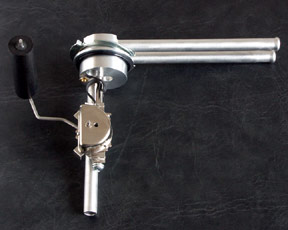
RobbMc 1/2" Sending Units
Drop-in replacement for factory 5/16" or 3/8" sending units. Budget alternative to a fuel cell or weld-on sump. Recommended for cars with engines over 450 hp. Recommended for all cars with an electric fuel pump and return/bypass style regulator
Applications
1968-1972 GM "A-body" cars (except station wagon) including Skylark, GS, Chevelle, Malibu, El Camino, Cutlass, 442, Lemans, GTO
Features
Sending Unit Options:
–8AN Male Fittings
Added to the ends of the feed and return tubes.
Reducer, 1/2" to 1/4" hose
Required when using a mechanical pump with 1/4" vapor return line.
RobbMc 1/2" Sending Units are now available. Order by phone or online through our secure Paypal shopping cart.
RobbMc Performance Products
775.885.7411
Cars From Around The World
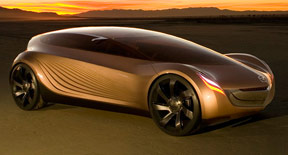
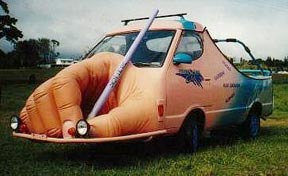
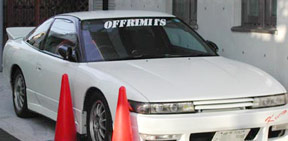
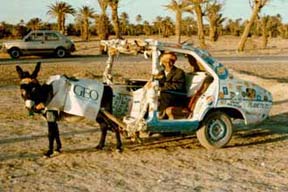
Drop-in replacement for factory 5/16" or 3/8" sending units. Budget alternative to a fuel cell or weld-on sump. Recommended for cars with engines over 450 hp. Recommended for all cars with an electric fuel pump and return/bypass style regulator
Applications
1968-1972 GM "A-body" cars (except station wagon) including Skylark, GS, Chevelle, Malibu, El Camino, Cutlass, 442, Lemans, GTO
Features
- 1/2" pickup and feed tubes reduce flow restriction to suction side of fuel pump
- 1/2" return tube allows use of a return/bypass regulator without modifying the fuel tank or switching to a fuel cell
- Return tube can be capped off if no return line is used
- Use with a reducer to connect 1/4" vapor return line from a mechanical pump
- Billet aluminum base and aluminum tubes are anodized for use with gasoline or alcohol
- Stainless fuel level sending unit works with OEM fuel level gauges (0-90 ohm)
- Eliminates restrictive, difficult to service intank "sock" filter. Use with RobbMc inline prefilter
- MADE IN THE USA
Sending Unit Options:
–8AN Male Fittings
Added to the ends of the feed and return tubes.
Reducer, 1/2" to 1/4" hose
Required when using a mechanical pump with 1/4" vapor return line.
RobbMc 1/2" Sending Units are now available. Order by phone or online through our secure Paypal shopping cart.
RobbMc Performance Products
775.885.7411
Cars From Around The World




To unsubscribe from the free RobbMc Performance Newsletter, click the "Unsubscribe" link at the top of this newsletter. Or send an email to news@robbmcperformance.com and place the word "Remove" in the subject line of the email.